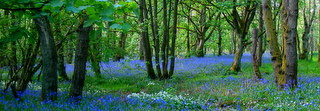A serious matter with a joke tagged to it, and in drawing your attention to it a good excuse for me to post four more stunning photographs I keep being allowed to publish on Birds2blog.
So theres this serial egg collector who lives in London, he has become the first person in England to receive an Anti Social Behaviour Order (ASBO) for crimes against nature. He is also believed to be the first person to receive an ASBO restricting him from visiting Scotland.
OK....so you've already seen the 'serious matter' and are now aware of the 'joke'....unless you can tell me how this ASBO is going to be policed. But this guy is a lunatic, and in the case of the birds and their eggs a dangerous lunatic, this bloke is currently serving his fourth prison sentence for egg collecting, and yes you guessed it, he holds the record in the UK for the person who spent the most time in prison for stealing eggs, and the ASBO he has now been awarded is because of the damage he wreaked on rare birds and the stealing of their eggs.
So who has the task of keeping an eye on this man, the ASBO lasts for the next ten years - the maximum term for these orders - and it is supposed to prevent him from travelling to Scotland during the breeding season because of his repeated stealing of Golden Eagle and Osprey eggs, furthermore, he is banned from all RSPB and Wildlife Trust land for the same period of ten years. Well....if you can't see the joke about all this I'm sorry to tell you your mind is failing you at a much faster rate than mine is.
But of course something has to be done about these people with this kind of passion about our wildlife, and the good to come out of this is, if Mr Egg Collector is found breaching this order, instead of the maximum £5,000 fine and six months in prison, he can be handed out a fine of £20,000 and five years in prison, but....if he does go to Scotland let alone steal eggs, who is going to catch him.
Now the good stuff, stunning photography with just a little waffle....
Long-tailed Tit David Cookson
Followed by an equally impressive Long-tailed Tit from David....
Redwing Tony Duckett
A brilliant Redwing from the Regents Park man Tony Duckett....apparently not many of this species or Fieldfare being seen in this country this winter....
Sparrowhawk Brian Rafferty
And last but certainly not least, the close encounter with the Sparrowhawk by Brian.
















.JPG)














.JPG)




%2520L.jpg)
